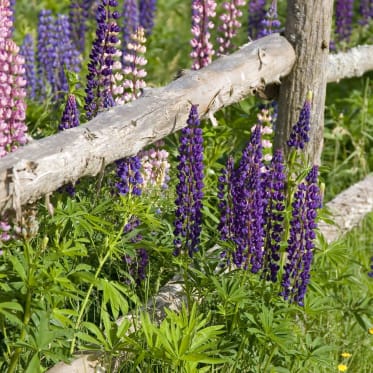Frequent search terms
.jpg)
- COMPO
- Guide
- Plant Care
- Basics
- Planting properly
- Ice Saints period – the dreaded late frosts
What is behind the weather phenomenon
The Ice Saints period: The old country lore
No other country lore tortures as many gardeners each year as Ice Saints. Whether fruit, vegetables or flowers: If you want to stay clear of late frosts, it is better to wait until the end of May to seed. So what is the old country lore all about? Find out what is behind it and where its unusual name comes from in this article.

The dreaded late frosts
As soon as we see the first rays of sunshine in April, we are itching to plant, sow and repot. But beware: Long-term climate data proves that the danger of night-time frosts generally does not pass until the end of May. Hobby gardeners who are too rash risk killing off carefully planted seedlings and overwintered tub plants. From a meteorological standpoint, the late cold spells are caused by the marked temperature differences between Central Europe and northern coastal regions at this time of year. Areas of low pressure develop in the North as the windless mainland warms up much faster than coastal regions. They draw in the warm air which in turn causes ice-cold air streams from the polar regions to be pushed onto the mainland. After several weeks of mild temperatures, night frosts or even snow can suddenly fall on our gardens. The dates in the calendar only act as a rough guide; today, farmers and gardeners can generally rely on meteorologically determined weather forecasts. In fact, the late Central European frosts occurred more frequently and were much harsher in the 19th and 20th century than today – a development that can most likely be attributed to global warming.
The term 'Ice Saints'
'Ice Saints' comes from common parlance. It not only refers to the days in the calendar related to seeding but also to commemoration days honouring Catholic bishops and martyrs: Mamertus (11 May), Pankratius (12 May), Servatius (13 May), Bonifatius (14 May) and Cold Sophia (15 May). Since the dreaded late frosts previously often occurred on their commemoration days, they are traditionally referred to as the 'Ice Saints'.
The key feature of the date
The old country lore originates from a time prior to the calendar reform in 1582, which involved getting rid of ten calendar days. As the commemoration days have remained on the calendar where they always were, the weather phenomenon should also be pushed back by this much on our current calendars – the frost days would therefore not be expected until between 21 and 25 May. The date of the Ice Saints also varies from region to region. While 11 to 13 May are referred to as the Ice Saints in North Germany, in the South they don't begin until 12 May and end on 15 May. The country lore also exists in other European countries. We generally advise the following: It is better not to rely too much on the Ice Saints period and instead keep an eye on the weather forecast before you plant your seedlings outside. After all, the weather is and remains predictable only in the short term.
This might also interest you





